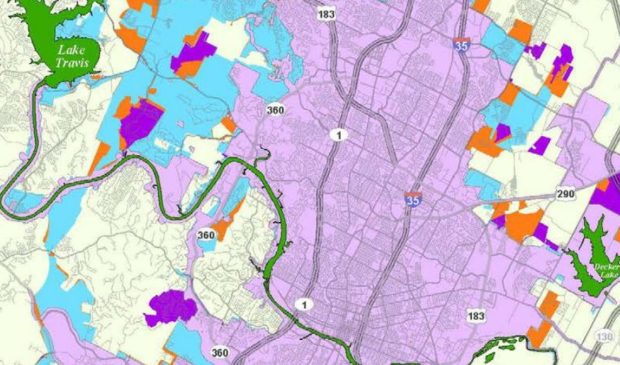City demographer smashes assumptions about growth at CodeNEXT meeting
Thursday, February 1, 2018 by
Joseph Caterine For the past year, the land use commissions have been reviewing the drafts of CodeNEXT, and the discussions have primarily revolved around how to accommodate the incredible population growth the city has experienced for the past few decades. About two weeks before the third and final iteration of the proposed Land Development Code rewrite debuts on Feb. 12, city demographer Ryan Robinson gave a presentation to the commissions in an effort to ground the perception of the rapid changes in data and facts.
Parts of the report were more or less common knowledge. Based on the latest census data, the Austin-Round Rock metropolitan area continues to be by far the fastest growing of the large United States cities, making it the 11th-biggest city in the country. Robinson predicted that Austin will cross the 1 million mark by 2020. Job growth has also been above the U.S. average since the Great Recession, and it now sits around 2.5 percent (although Robinson said he had information that indicated it could jump back up to 3 percent soon).
Many have advocated for CodeNEXT to make it easier to build more housing in general so that the supply can meet this steady demand. This argument, however, rests on the assumption that people mostly want to move to Austin, when in fact over the past five years growth has spread to jurisdictions outside of Austin. Travis County is still the fastest growing of the counties in Central Texas, but the rate has declined since 2010, whereas the rates of Williamson, Hays and Bastrop counties have increased.
This shift is not as much a result of the restrictions of the city’s current zoning, although that is a factor, but more due to greater market forces, Robinson said. “Certainly I think we can increase housing production in the city, but we are up against the land price curve,” he said at the meeting. “There’s very little that we can do as planners or you can do as commissioners to influence the price of land.”
Many commissioners have been outspoken in their support of CodeNEXT facilitating more family-friendly housing, responding to the influx of market rate efficiency units springing up around town. While Robinson said it was true that new multifamily complexes have targeted single households, he said it is a “false narrative” to claim that the majority of people moving to Austin are young singles. Actually, the fastest-growing age cohorts are seniors and baby boomers (55 and above).
“We have become a go-to destination for retirees. I think what it means to retire is changing,” Robinson said. “You’re going to have to stay in the game. If that’s true, I think places like Austin will become very, very attractive for seniors.”
Looking closer at job growth also raises concerns. The population of the metropolitan area is decentralizing, and the distribution of jobs is as well, but not nearly at the same rate. Moreover, the high-salary jobs that the urban core has captured have ended up raising housing costs, leading Zoning and Platting Commissioner Betsy Greenberg to ask, “Is job growth bad for us?”
Greenberg admitted that it was a strange question to ask, but ZAP Commissioner Jim Duncan agreed that jobs are not equal, and he implied that a business like a call center is open to a different kind of employee than a technology firm. “Frankly, I hope Amazon picks the Amazon,” he said.
On the other hand, Planning Commissioner Angela De Hoyos Hart strongly disagreed. “Anyone who’s ever been laid off, fired or lost a job would not spend a (moment) wondering if economic growth and a booming economy is a blight in our city,” she said.
In conclusion, Robinson said that he thought supply and demand were working almost perfectly at the regional level but that there were also “dire” structural imbalances like income inequality, gentrification, and affordability that city policy could address.
Curious about how we got here? Check out the Austin Monitor’s CodeNEXT Timeline.
The Austin Monitor’s work is made possible by donations from the community. Though our reporting covers donors from time to time, we are careful to keep business and editorial efforts separate while maintaining transparency. A complete list of donors is available here, and our code of ethics is explained here.</em
You're a community leader
And we’re honored you look to us for serious, in-depth news. You know a strong community needs local and dedicated watchdog reporting. We’re here for you and that won’t change. Now will you take the powerful next step and support our nonprofit news organization?









